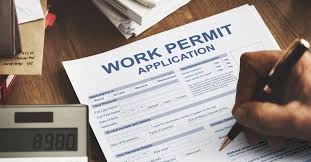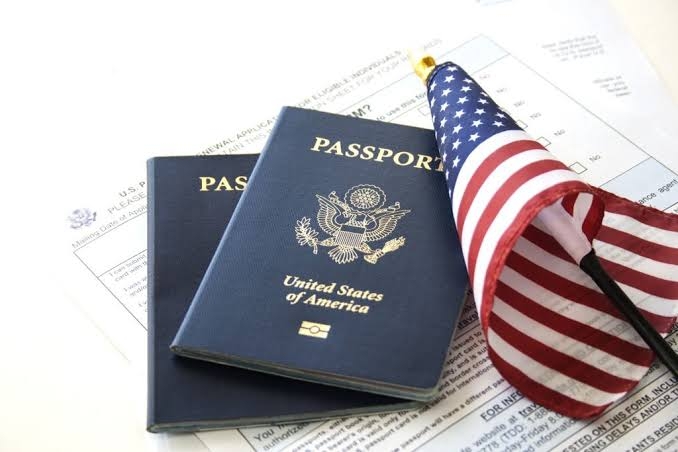Temporary work permits allow foreign nationals to work legally in another country for a set period. These permits are usually tied to a specific job or employer and come with rules and timelines that you must follow. Whether you’re pursuing short-term employment or hoping to transition into permanent residence later, understanding how temporary work permits work is the first step to moving forward with your goals.
What Is a Temporary Work Permit?
A temporary work permit is a legal document that gives you permission to work in a foreign country for a limited period. It does not provide permanent residency and is usually issued for seasonal, contract-based, or employer-specific roles. These permits are essential for anyone who wants to work abroad and stay compliant with immigration laws.
Having a temporary work permit means you have met certain conditions set by the host country, such as having a valid job offer, the right skills, and proof that you’re not displacing local workers. It also offers legal protections and access to certain public services, depending on the country.
Read: Temporary Work Permit vs Permanent Residency: The Pros and Cons
Common Types of Temporary Work Permits in Popular Countries
Different countries have different work permit systems based on their labor needs and immigration policies. While the names and requirements vary, the goal is the same: to fill labor gaps temporarily without committing to long-term immigration.

Canada
In Canada, the Temporary Foreign Worker Program (TFWP) requires employers to prove they need a foreign worker by getting a Labour Market Impact Assessment (LMIA). Another stream, the International Mobility Program (IMP), allows LMIA-exempt hires for jobs that are deemed to benefit Canada, such as intra-company transfers or trade agreement professionals.
United States
In the U.S., the H-1B visa is for skilled professionals in fields like IT, engineering, or medicine. The H-2A and H-2B programs support seasonal agricultural and non-agricultural jobs. All require employer sponsorship and strict timelines.
United Kingdom
The UK offers Temporary Worker visas for roles in creative, charity, religious, and seasonal work. These visas are time-limited and usually require sponsorship by an approved employer.
Australia
Australia’s Temporary Skill Shortage (TSS) visa lets skilled workers work for up to four years in jobs listed on the Skilled Occupation List. Employers must sponsor the visa, and applicants must meet skills and English language requirements.
General Requirements to Apply
Each country has its own set of criteria, but most require:
- A valid job offer from an employer authorized to hire foreign workers.
- Proof of skills and qualifications, such as diplomas, licenses, or professional certifications.
- Work experience, especially if the job is specialized or technical.
- A clean criminal record, confirmed through background checks or police clearance certificates.
- Medical exams to prove you meet health standards, particularly in sectors like healthcare or food service.
- Proof of language proficiency, often in English or the official language of the country.
- Application fees that vary by country and visa type.
You’ll also need a valid passport, and in some cases, a letter from the employer confirming your job responsibilities and start date.
Read: What Not to Do During a Canada Work Permit Interview
How to Apply Step by Step
The application process depends on the country, but here is a general sequence:

- Secure a Job Offer: You need an offer from an employer who is qualified or registered to hire foreign workers.
- Employer Files Documentation: In many cases, your employer must submit forms or get labor certification (like the LMIA in Canada or PERM in the USA).
- Gather Required Documents: Collect your passport, job offer letter, academic records, proof of experience, language test scores, and any health or background documents.
- Submit Your Application: Apply online or through the embassy/consulate. Double-check that your application is complete.
- Attend Biometrics or Interviews: Some applications require fingerprints or an in-person interview.
- Wait for Decision: Processing times vary from a few weeks to several months depending on the country.
- Receive Your Permit: Once approved, your visa or permit is issued. Follow the instructions carefully for traveling and starting your job.
Rights and Limitations
Temporary work permits come with certain rights and restrictions that you must follow. Knowing these will help you avoid violations that can lead to permit revocation or bans from reapplying.
What You Can Do:
- Work for the specific employer who sponsored your visa.
- Access healthcare or other public services if included in your permit.
- Earn legal wages and be protected under labor laws.
- In some cases, bring your spouse or children as dependents.
What You Cannot Do:
- Work for any other employer unless you apply for a new permit.
- Stay beyond the expiration date of your permit.
- Enroll in full-time study unless authorized.
- Automatically apply for permanent residency without meeting extra requirements.
Avoiding Mistakes and Rejections
Rejections can happen for many reasons, often due to avoidable errors. Pay close attention to these common pitfalls:
- Missing documents or incorrect forms: One unchecked box or wrong attachment can lead to delays or denial.
- Unclear job offer: Your offer letter must clearly state job title, salary, and contract duration.
- Failing health or background checks: Always use approved medical providers and submit current police certificates.
- Not meeting qualifications: Make sure your education or experience matches the job requirements.
- Late submission: Apply as early as possible to account for processing time.
Double-check everything before submission, and keep a full copy of your application for your records.
Read: Canada Post-Graduation Work Permit vs Skilled Worker Visa
How a Temporary Work Permit Can Lead to Permanent Residency
A temporary work permit can sometimes be your first step toward becoming a permanent resident, depending on the immigration system of the country you’re in. Many countries use work permits to fill labor gaps, and if you prove yourself as a skilled worker, they may offer long-term options. To move from temporary to permanent status, you usually need to:

- Gain enough skilled work experience in a job category that qualifies under permanent immigration programs.
- Meet language, education, and work history requirements based on the country’s specific rules.
- Apply through a permanent residency stream, such as Express Entry in Canada or an Employment-Based Green Card in the U.S.
- Stay within legal status the entire time, without overstaying your permit or violating any rules.
Some programs even offer employer-supported pathways where your employer can help you apply for permanent residency after a set period of time. If your long-term goal is to stay permanently, it’s smart to:
- Pick a job or employer that’s part of a recognized immigration stream.
- Keep records of your employment, taxes, and compliance with visa rules.
- Check if your province or state offers regional nomination options.
Planning ahead makes the process easier. Look for work permits that clearly state a path to stay long-term, and understand the steps you need to take before your permit expires.
When to Get Legal Help
While many people apply on their own, some situations require legal help:
- If your application has been denied and you want to appeal.
- If you have legal issues like a criminal record or past visa violations.
- If your employer is unsure how to handle sponsorship paperwork.
- If you’re applying with family and need help understanding dependent rules.
- If you’re transitioning from a temporary visa to permanent residence.
Temporary work permits are a practical way to gain international work experience, earn income, and potentially set the stage for permanent residency. Each country has its own rules, but the core steps finding a job, applying correctly, and staying compliant remain the same. By understanding your rights, preparing thoroughly, and planning ahead, you can work abroad successfully and avoid unnecessary issues.


